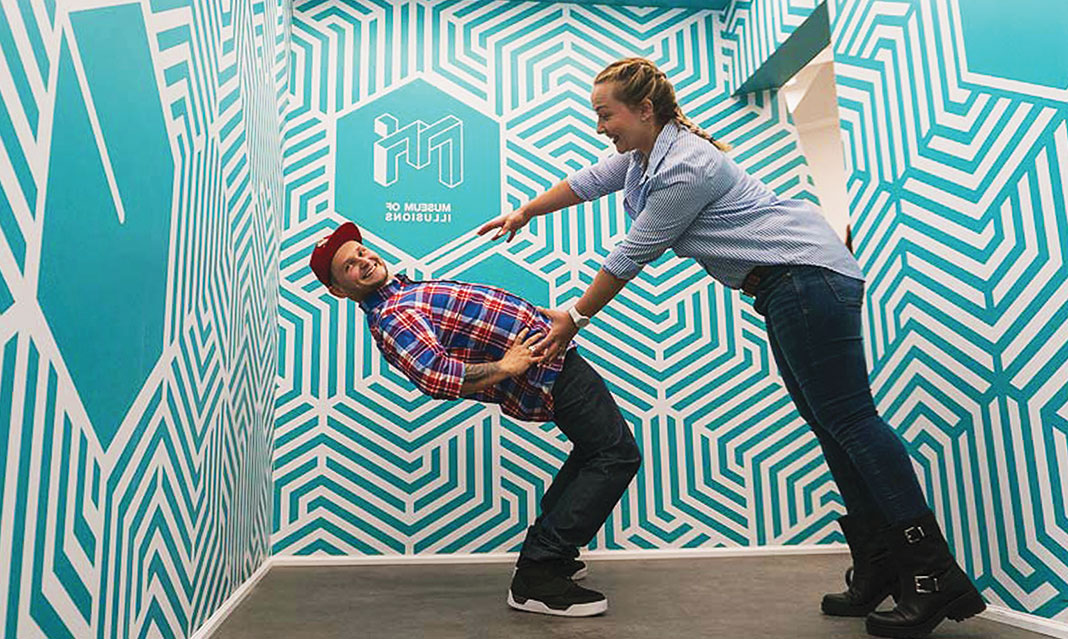Were you to pass by the Museum of Illusions at 132 Front Street East, you would likely shrug it off as a shop that sells puzzle-based novelty gifts—just like I did. Were you to pass by the Museum of Illusions at 132 Front Street East slowly, however, you would register the “Sold Out” sign posted at its door, try to squish down the niggling feeling of FOMO, and fail—just like I did.
Originating from Zagreb, Croatia, Museum of Illusions is, well, a museum housing exhibits that trick the viewer’s vision. The museum first opened in Zagreb three years ago, its interactive and Instagram-friendly nature inspired fourteen locations worldwide—including one in Toronto—with seven more opening soon.
For $26, the museum promises an all-encompassing visual and sensory experience of a “world that will confuse you completely, but also educate you,” and it tries its best to deliver.
The Museum of Illusions intersperses framed optical and photographical illusions with eighteen interactive installations. Accompanying each illusion is an information sign that explains to the viewer what they should do, what they are experiencing, and what the illusion’s history is.
The café wall illusion, for example, consists of lines with black and white zig-zagging squares that appear slanted to the human eye. In truth, the lines are not slanted but parallel. The illusion was re-discovered by University of Bristol professors Richard L. Gregory and Priscilla Heard in 1979, when a member of their lab Steve Simpson noticed this illusion in—what else—a café nearby.
Though this is admittedly informative, visitors, including me, preferred recording Instagram boomerangs of illusions rather than reading up on them. The museum understands this well and has continuously placed blue signs around the building divulging the best spots to take pictures from, and declaring that visitors limit their stay inside room-based exhibits to 2 minutes during peak times, although the rooms are often sold out.
And the Museum of Illusions has good reason to sell out; it has some truly awe-inducing (and Instagram worthy) installations. One of these installations includes the Vortex Tunnel where visitors stand on a straight platform while the room around them moves, yet their brain convinces them that they are the ones spinning around. Visitors wander around the Anti-Gravity Room, teetering and tottering due to its angled floors and dizzying wallpaper. Visitors can sit on a slab of metal in Chair Illusion but a picture far away will reveal them to be sitting on a giant chair. Visitors can be startled when they see an image where previously there was a black screen, via holograms. Visitors unable to attend the Yayoi Kusama: Infinity Mirrors exhibit at the AGO last spring can visit the Infinity Room for a small taste.
Visitors can also experience the world upside down in The Reverse Room, discover what it’s like to be a snack, literally, on the Head on the Platter, and grow tall and short in a matter of minutes in the Ames Room.
Admittedly, visitors can discover most of the framed optical illusions by buying an optical illusions book—such as ones in the Museum of Illusions giftshop. However, the museum does contain shocking, startling, and stunning installations meant for the social-media savvy rather than savants of art. If you want to up your social media stature, then Museum of Illusions is the spot for you—just be prepared to wait in line!



